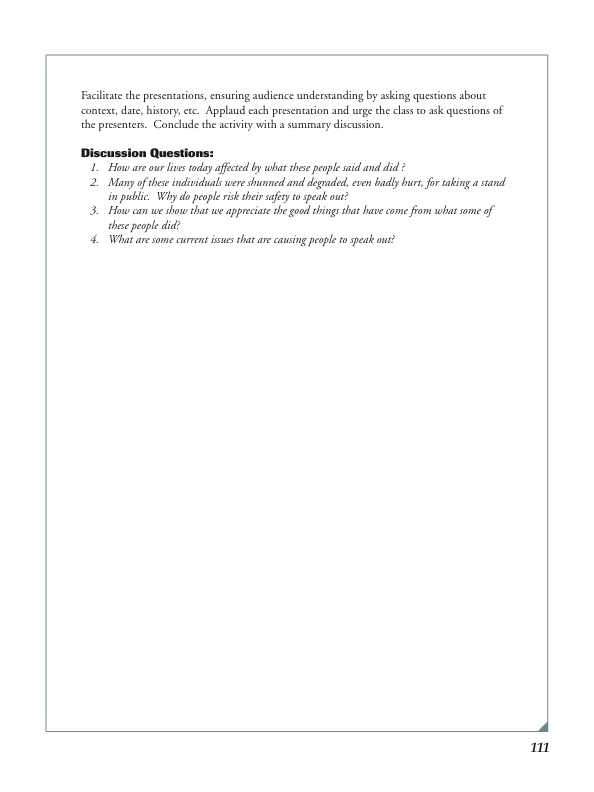Current Reality
As an educator one of your most important roles is to teach your students how to be good citizens. Democracy, and the requisite role of being a participating citizen, should not be viewed as only relevant to adults, or taught somewhere else. Citizenship used to be taught in civics classes. Today many of these programs have been curtailed with STEM and teaching-to-the-test getting far more direct instruction.
Citizenship is Simply This…
Learning the importance of citizen involvement to a well functioning democracy should not be left to chance. It’s important for students of all ages to understand that democratic involvement involves differences of opinion, that there are often an imbalances in the hierarchies of authority and power, that progress can take place with a lack of resources, and that differing issues and perspectives, should be dealt with in a positive, respectful manner. Learning to compromise, and work together for the good of all is good citizenship. Learning how to live together, with all our differences, while maintaining social order can, and should, be taught in schools.
More Reality
Here’s more reality taken from the resource guide, Virtues, Values, and the Very Best You – Building Character in Kids.

Students can learn the value of citizenship by experiencing the impact of their individual efforts in the close knit community of the classroom and in the larger school community. They can learn that they do make a difference when they follow a rule, voice their opinion, vote, properly dispose of trash, work and play cooperatively with other students, listen and stay informed, do their part to make special events successful, respect authority, perform voluntary school service, and keep their parents involved by taking home notices and inviting participation. When meaningful civic values help define a student’s relationship to his/her immediate environment, those values can logically and developmentally be extended to the community, the nation, and the world.
Methods of fostering good citizenship include:
- Teach civic values through academic subjects, the news, TV, and literature. Examine the actions of real people and give them citizenship “grades.”
- Find ways of connecting civic values to home and community.
- Display photos and portraits of noteworthy citizens, as well as posters and quotations that reflect the virtues of good citizenship.
- Teach a process for democratic problem solving that includes consideration for all points of view, discussion, debate, and consensus seeking or voting.
- Involve students in decision making and encourage them to share responsibility for making the classroom a positive place to learn.
- Hold regular class meetings to discuss issues and problems that arise, such as disruptive behavior, bullying, cyber-bullying, stealing, social cliques, and hurtful language.
- Involve the students in the creation and enforcement of rules, and in decisions regarding the consequences of breaking rules.
- Talk about how you work with other teachers, counselors, administrators, parents, and board members to determine the policies of the school and illustrate for students how their needs, wishes, and requests impact the governing of the school.
- During election campaigns, talk with your students about voting. Show voter registration cards and sample ballots. When elections are over, explain who won and by how many votes. Cover local as well as national elections, helping students to recognize that individual votes make a difference.
Here is Your FREE Lesson – ENJOY!



Just click HERE to open a fully reproducible PDF of this activity and experience sheet…
If you like our blog resources and would like to receive them regularly, please subscribe here or on our website at www.InnerchoicePublishing.com
If you are already a subscriber, I hope you find this activity valuable. Help us grow our blog by sharing these activities and encouraging others to join. Thank you.
Thanks so much for reading!
Susanna
